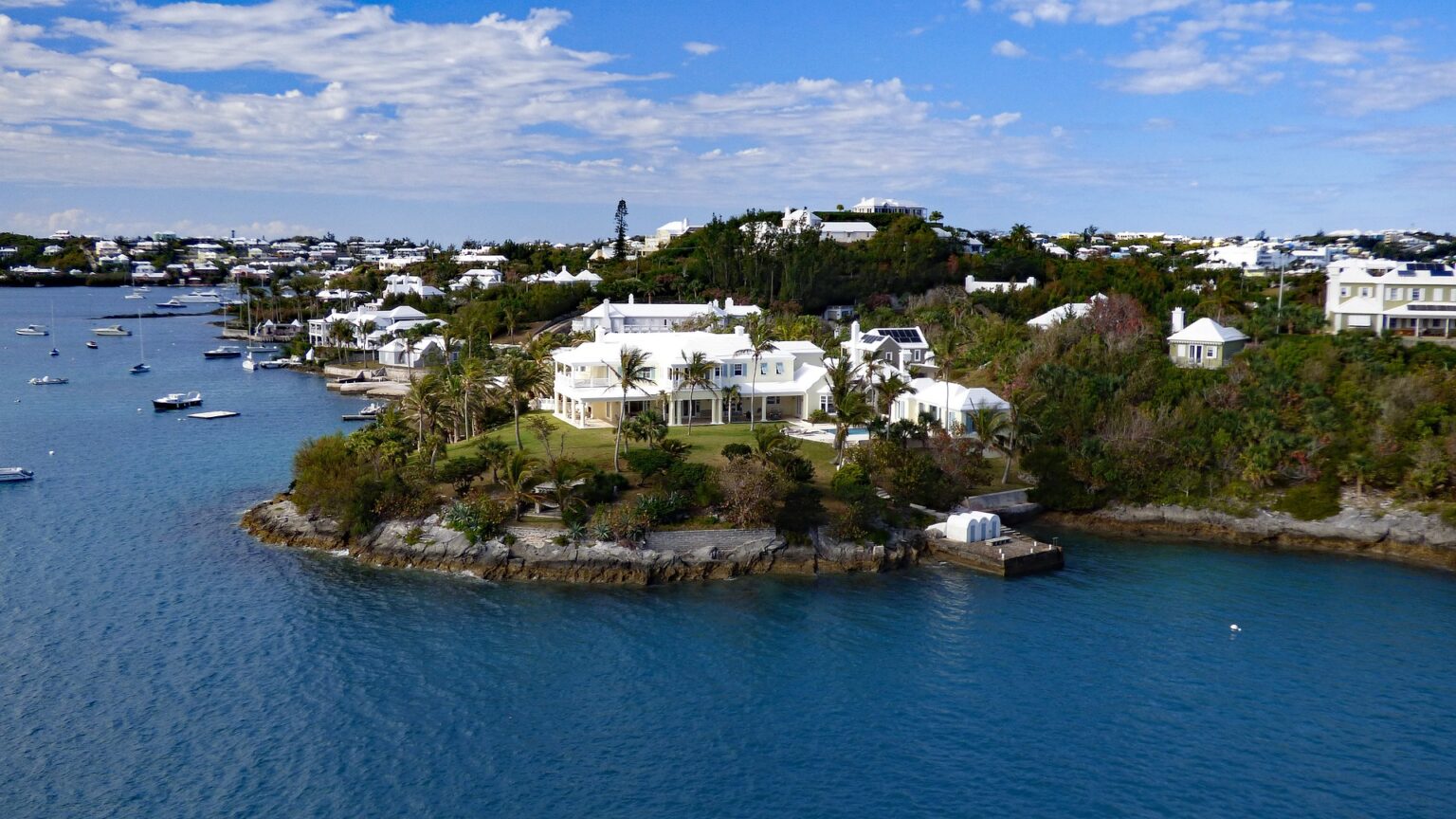Bermuda houses white roofs pose a unique challenge: How can 65,000 people get their water on an island where there are no lakes, rivers, or streams?
A violent summer hurricane that devastated the Virginia Company’s flagship, Sea Venture, 700 miles off the Virginia coast, blew the ship terribly off course in 1609. Thankfully, nobody perished. Regrettably, there was no fresh water on the island.
Its island is still devoid of a continuous body of fresh water despite being one of the planet’s most densely inhabited nations today. Strangely enough, before the plane even lands, visitors to Bermuda may see the solution to the potability issue.
Bermudians are among the most water-conscious people in the West, and their homes reflect this awareness. Human life in the middle of the Atlantic Ocean is solely due to the architectural rain-catch concept of the blindingly white, limestone Bermuda Roof, which dates back to the 17th century. Every house must have a roof that collects rainwater and directs it into underground cisterns that provide the majority of the islanders’ freshwater needs.
The graceful roofs were first designed as a means of survival, but they have since evolved into a beautiful landmark. A native and raised Bermudian named Guilden Gilbert claims that architecturally, Bermuda hasn’t altered much. It’s unlikely that island architecture would feature any modern design, which I believe to be a positive.
Bermuda Houses White Roofs: The Limestone Roofs

Picture from https://pixabay.com/photos/search/bermuda/
The purpose of the limestone roofing is to delay, direct, and collect rainwater in subterranean cisterns. Bermuda is a limestone island, hence the majority of Bermuda’s White Roof slabs are made from the stone that was dug up to make room for the foundation and required water tank. The rain is subsequently caught, slowed down, and directed by the sloping slabs through a number of pipes that converge in the underground tank.
Geoffrey Smith, an environmental engineer with the Government of Bermuda, claims that during periods of heavy rain, you can really hear the sound of the rain in the numerous downpipes in the walls. It makes a pleasant sound, in fact. 80% of each Bermuda Houses White Roofs must, according to standards, be set aside for rain catch, and the tank below must be able to contain 100 gallons of water for every 10 square feet of Bermuda’s White Roof space.
Also, Bermuda Houses White Roofs have advantages. As limestone naturally regulates temperature, most families don’t require central air conditioning. The inch-thick roofs are virtually hurricane-proof as long as there are no overhangs or spaces between the coated slabs. Occasionally, the entire stone roof will have been raised and moved up by one or two feet, according to University of Rochester historian Michael Jarvis. But, it’s still sturdy.
Resistant Roofs

Picture from https://pixabay.com/photos/search/bermuda/
The distinctively Bermudian relationship to water permeates daily life through the roofs, pipelines, and tanks. Shaun Lavis, a hydrogeologist, was born and raised in the UK but has adjusted to island life’s reliance on rainfall. I have a small portion of my brain that is constantly aware of the tank level, he claims. We’ve got good weather, so we’re currently in really good shape. According to him, islanders call extended periods of precipitation “tank-rain” or “tank-filler.”
He claims that the water pressure isn’t quite as strong as it is at home and so baths are less common. “If there has been a good rain, it will probably be a quarterly event. Nonetheless, it’s relatively taboo.
Indeed, water waste is detested, while rain is glorified. Children in Bermuda are introduced to conservation and the Bermuda Houses White Roofs at a young age. The relationship between water and survival is engrained in Bermudian children from an early age. Short showers, turning off the water while brushing your teeth, and, in hard times, flushing toilets as little as possible are just a few examples.
Of course, droughts continue to occur. Although roof catch generally satisfies Bermudians’ needs, advances have been made to serve a growing population. In the 20th century, the expansion of the tourism sector—which is currently distantly second to financial services—meant a flood of largely American mainlanders who were water gluttons. Around that time, the island built its first desalination plants, which provide fresh water via reverse osmosis.
Over the course of the century, more backup sources were discovered, such as groundwater lenses (fresh water that floats on top of thicker saltwater), water mains, and vehicles to deliver water to families without access to water. The island now reliably meets all of its water demands, but rain catch from Bermuda’s Whit Roof remains by far the largest source.
Also checkout our new blogs https://iccaribbean.com/bvi-spring-regatta-festival-2023/
Don’t forget to checkout are some latest and amazing products that you can buy while traveling to Bermuda.
enjoy our latest podcast.
If you are looking for the cheapest hotels and flights, go to Expedia and make sure to check the most recent Covid-19 updates before you go.


0 Comment